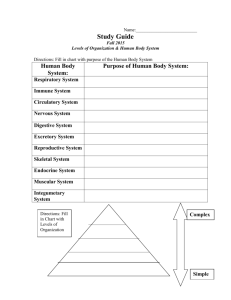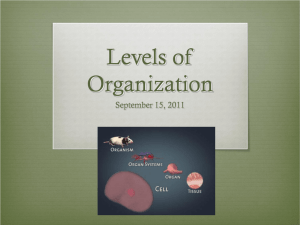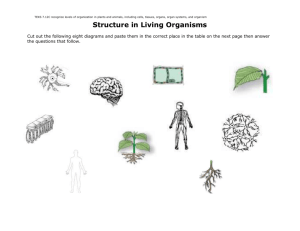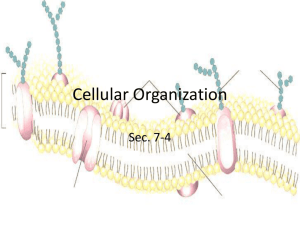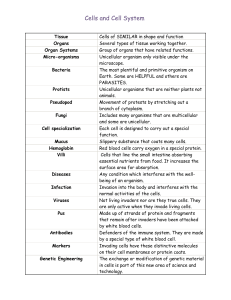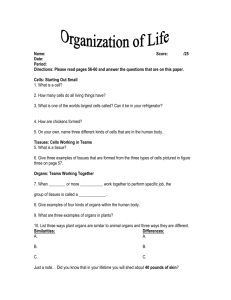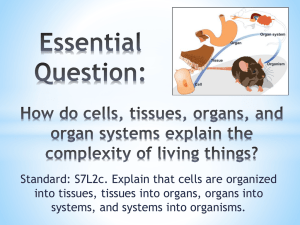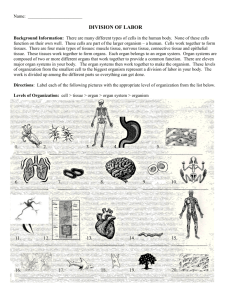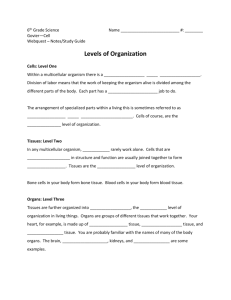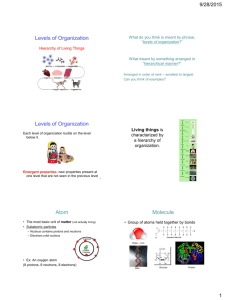Levels of Organization
advertisement
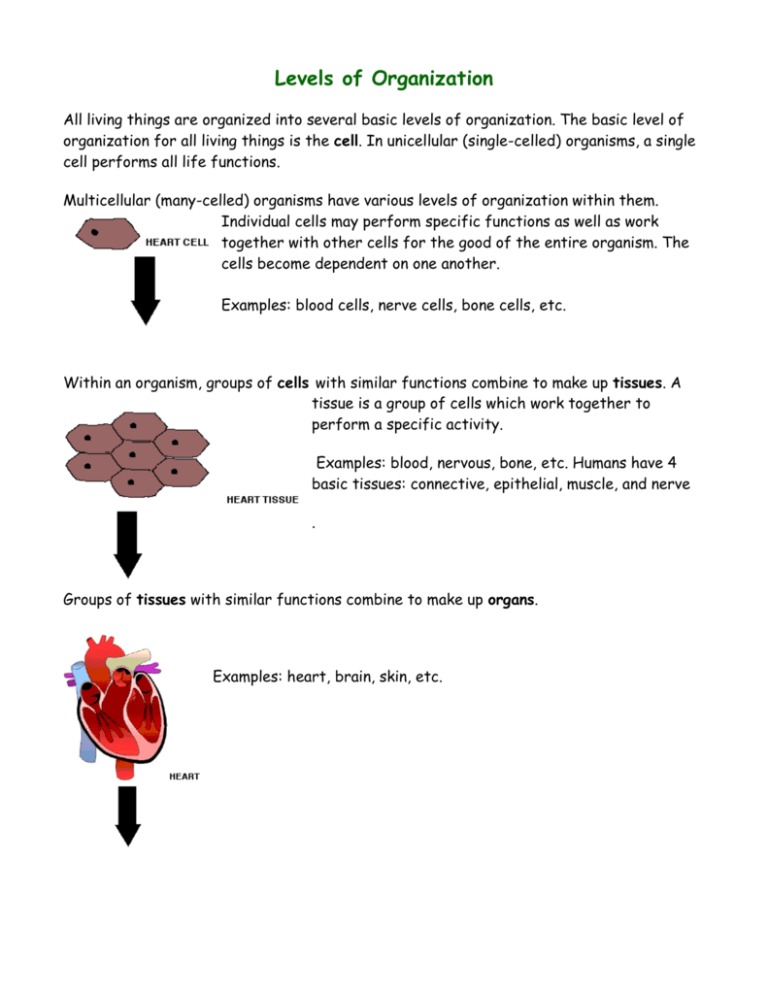
Levels of Organization All living things are organized into several basic levels of organization. The basic level of organization for all living things is the cell. In unicellular (single-celled) organisms, a single cell performs all life functions. Multicellular (many-celled) organisms have various levels of organization within them. Individual cells may perform specific functions as well as work together with other cells for the good of the entire organism. The cells become dependent on one another. Examples: blood cells, nerve cells, bone cells, etc. Within an organism, groups of cells with similar functions combine to make up tissues. A tissue is a group of cells which work together to perform a specific activity. Examples: blood, nervous, bone, etc. Humans have 4 basic tissues: connective, epithelial, muscle, and nerve . Groups of tissues with similar functions combine to make up organs. Examples: heart, brain, skin, etc. Groups of organs working together combine to make up organ systems. Examples: circulatory system, nervous system, skeletal system, etc. The Human body has 11 organ systems circulatory, digestive, endocrine (glands), excretory (urinary), immune (lymphatic), integumentary (skin), muscular, nervous, reproductive, respiratory, and skeletal. Several organ systems working together combine to make up an organism. An organism is an entire living thing that can carry out all basic life processes. This means the organism can take in materials, release energy from food, release wastes, grow, respond to the environment, and reproduce. Examples: bacteria, amoeba, mushroom, sunflower, human (while an organism may be unicellular, most organisms are made up of more than a single cell) The levels of organization in the correct order then are: cells --> tissues --> organs --> organ systems --> organisms


